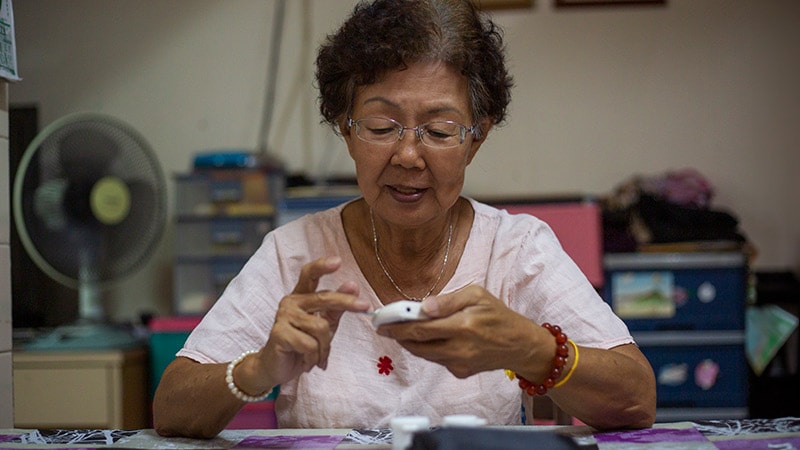Takeaway
- In drug-naïve patients with type 2 diabetes mellitus (T2DM) and high glycated haemoglobin A1c (HbA1c) level, initial triple combination with metformin, sitagliptin and lobeglitazone showed better efficacy and safety compared with conventional stepwise approach of sequential dose escalation with glimepiride and metformin.
Why this matters
- Findings suggest that triple combination therapy to preserve β-cells with a DPP4 inhibitor and to lower the burden of the β-cells with thiazolidinedione and metformin may be an ideal option for drug-naïve patients with T2DM with high HbA1c levels.
Study design
- A prospective observational study included drug-naïve patients with T2DM who received initial triple therapy (metformin plus sitagliptin plus lobeglitazone; n=100) and conventional therapy (glimepiride plus metformin; n=100) for 12 months.
- Changes in HbA1c level, homoeostasis model assessment of insulin resistance (HOMA-IR), homoeostasis model assessment of β-cell function (HOMA-β), urinary albumin-creatinine ratio and hypoglycaemia were evaluated at baseline, 2, 5, 8 and 12 months.
- Funding: Seoul National University Bundang Hospital.
Key results
- After 12 months, the triple therapy group had a significant reduction in HbA1c levels vs conventional group (6.7±1.3% vs 7.3±1.2%; P<.05).
- After 12 months, HbA1c target <7.0% (69.8% vs 41.7%) and ≤6.5% (58.1% vs 29.8%) were achieved by higher proportion of patients who received triple therapy vs conventional therapy (P<.001 for both).
- Triple therapy vs conventional group had a significant improvement in HOMA-IR (2.7±1.5 vs 4.5±2.4), HOMA-β (81.1±66.1 vs 43.1±26.5), and urinary albumin-creatinine (72.8±278.8 vs 114.9±388.2 mg/g; P<.05 for all).
- Risk for hypoglycaemia was lower in triple therapy vs conventional group (1 vs 11 patients).
Limitations
- Small sample size and short study duration.
References
References



